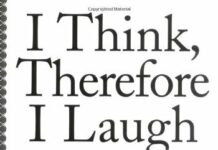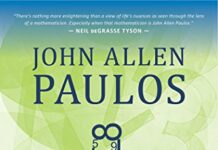
Ebook Info
- Published: 2013
- Number of pages: 240 pages
- Format: PDF
- File Size: 1.10 MB
- Authors: John Allen Paulos
Description
John Allen Paulos is a master at shedding mathematical lights on our everyday world:What exactly did Lani Guinier say about quotas?What is the probability of identifying a murderer through DNA testing?Which are the real risks to our health and which the phony ones?Employing the same fun-filled, user-friendly, and quirkily insightful approach that put Innumeracy on best-seller lists, Paulos now leads us through the pages of the daily newspaper, revealing the hidden mathematical angles of countless articles. From the Senate, the SATs, and sex to crime, celebrities, and cults, Paulos takes stories that may not seem to involve mathematics at all and demonstrates how mathematical naïtéan put readers at a distinct disadvantage.Whether he’s using chaos theory to puncture economic and environmental predictions, applying logic and self-reference to clarify the hazards of spin doctoring and news compression, or employing arithmetic and common sense to give us a novel perspective on greed and relationships, Paulos never fails to entertain and enlighten.Even if you hated math in school, you’ll love the numerical vignettes in this book.
User’s Reviews
Editorial Reviews: Review “A wise and thoughtful book, which skewers much of what everyone knows to be true.”—Los Angeles Times“A fun, spunky, wise little book that would be helpful to both the consumers of the news and its purveyors.”—Washington Post About the Author John Allen Paulos is a professor of mathematics at Temple University. His books include the bestseller Innumeracy, A Mathematician Plays the Stock Market, and Irreligion. He lives in Philadelphia.
Reviews from Amazon users which were colected at the time this book was published on the website:
⭐Just re-read this book again, jumping from one subject to another during a lonely weekend. Reading the ones i mark the last time iread it.I love Innumeracy, and I love this one too….This book consists of loosely connected materials that you often see in the newspaper and John take a fresh mathematician look into it, sneering and smiling and teaching us what to watch over next time we read it.The logic will make you smile a lot, and the awakening will make you look at your newspaper with a different point of view, some sort of small revelation.I believe that John Allen Paulo has awaken up the mathematic curiocities in a lot of his readers, including me. He would argue that the percentage is too small to make a dent to this world of innumeracy people, (which is mathematically correct, and he has mathematically proven that into this world).But to those who have been changed, it did matter for their lives. Go get it and have funs reading, if you found it too daunting, take a rest, and re read the book next week, you will be glad you did.Thank You John.
⭐Our world is permeated by the fragrance of that which is not so, and this is the book to help you detect it from a mile away. In this entertaining volume, Paulos dissected example articles from his years of studying the newspaper, showing what the journalist reported and how the numbers in the articles were applied (usually incorrectly) in each case. Each topic includes discussions of the logic behind the newspaper articles and of the math that underlies the claims made by the writers. It seems that one could realize almost full value from the book even if the math is too hard to follow. However, I particularly enjoyed his detailed reviews of the appropriate calculations. I heartily recommend the book to anyone who wants to become a better-informed citizen and a skilled spotter of BS.
⭐This was a good read. It was difficult to read at times but generally light and funny. I had lots of fun reading it and it really opened up my eyes to new things.
⭐This book is a collection of very short essays describing the use of mathematics in a number of public contexts. The examples are simplified and there is little or no explanation of computational methods or deeper mathematical concepts. It does, however, point out in a number of interesting examples the ways in which the casual use of mathematical concepts in the news frequently misleads or deceives the casual reader.
⭐Although it introduced some new perspectives or point of view to different kind of news that you could “read” in a newspaper, I couldn’t help to feel that it could have extended a little bit more in the sense that more detail or explanation on some subjects, not just a comment. It really felt like he was making a short comment as he read the newspaper, but if he is planning to deliver explanation, well, a little more detail wouldn’t harm.
⭐Just like it says, a mathematician reads the newspaper. He shows how reporters use math incorrectly. You could argue reporters use math somewhere between deceptively and very inappropriately.This should be mandatory reading along with “How to Lie With Statistics”.
⭐This book shows a clarity of mind. The author has great examples, but it did not age well. Makes me miss newspapers.
⭐I have to say I really enjoy John Allen Paulo’s style of writing. His wry observations and insights are wonderful to behold on paper.The book is somehow timeless, it is as useful and observant now as it was when written.An easy recommendation to make.
⭐Interesting read. Debunks the illusions we have about the likelyhood of events happening.
⭐Clear and entertaining explanation of how easily and/or badly science and particularly statistics can be misrepresented, misunderstood or misused by the press.
⭐I liked this book. Some bits were really thought provoking and made me lie in bed at night, trying to do mental arithmetic. Some of the logic he presents is also a challenge to get your head around, but well worth it.The low mark is because some aspects are slightly dull or seem more of a random expression of dissatisfaction than a mathematical analysis.Overall, worth a read, but not all of it…..
⭐”Statistical thinking will one day be as necessary a qualification for efficient citizenship as the ability to read and write.” H.G. WellsOf the three main books written by John Allen Paulos – this is the best. He popularized the term Innumeracy – defined as incompetence with numbers rather than words. His main theses presented throughout his books are the average citizen does not understand the mathematical concepts of statistics, probability (risk), order of magnitudes etc. properly and result in making many incorrect assumptions and decisions in their everyday life.In this book, Paulos presents his views on how mathematics is used and misused in the popular media. He discusses how reports of numbers are misleading or inaccurate. Many misperceptions are sometimes presented by authors through their own innumeracy, however many writers with “hidden agendas” sometimes choose to present numbers to their advantage to prove or convince you of their point of view.Paulos discusses mathematics in relation to a person who is reading the “stories” in their daily newspaper and divides his essays into sections as you would read in a daily newspaper.This book is still relevant today and well worth reading. It is intended for the general public to make them more aware and critical of the numerical fallacies that you “see” in the everyday media.
⭐Though the title suggests a unique topic but after reading it one would get bored as much as he can when computing bigger fractions. A book where the interpretation of newspaper is simply to form a frequency distribution table. Though its a work of a statistician. By no means one should buy it.just a waste of money.
Keywords
Free Download A Mathematician Reads the Newspaper in PDF format
A Mathematician Reads the Newspaper PDF Free Download
Download A Mathematician Reads the Newspaper 2013 PDF Free
A Mathematician Reads the Newspaper 2013 PDF Free Download
Download A Mathematician Reads the Newspaper PDF
Free Download Ebook A Mathematician Reads the Newspaper




